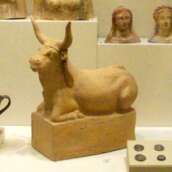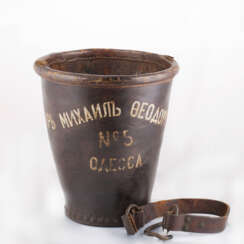russisches kaiserreich









Carl Fabergé (Russian: Карл Гу́ставович Фаберже́) was a 19th- and 20th-century Russian jeweler, entrepreneur, and artist of German descent. He ran a family jewelry company for almost 50 years, which became world-famous for its products - Easter eggs made of precious metals, stones, and enamel.
Carl Fabergé met the Russian Emperor Alexander III at the All-Russian Exhibition in Moscow in 1882, which was a landmark event in the jeweler's career. The emperor ordered an Easter egg from the master for his wife, which the empress loved. From this moment on Fabergé, who became the jeweller to the Court, became responsible for the annual production of Easter eggs for the imperial court. Members of the imperial family also ordered jewelry from Fabergé for their many European relatives. This turned the Fabergé family company into one of the leaders of the world jewelry market.
Fabergé produced not only high-end jewelry products, but also items for the average buyer. In 2005, at Sotheby's in New York, several stone figurines were sold for $850,000 to $1,800,000.





Vladimir Yegorovich Makovsky (Russian: Владимир Егорович Маковский), a distinguished Russian artist born in 1846 in Moscow, was celebrated for his genre paintings that vividly depicted everyday life with a blend of humor and social critique. His father, Yegor Ivanovich Makovsky, co-founded the Moscow School of Painting, Sculpture, and Architecture, where Vladimir later studied and taught, shaping the future of Russian art alongside his artistic family.
Makovsky's work often showcased small-town scenes and common folk, creating narratives that were both endearing and pointedly critical of societal injustices. Noteworthy pieces like "The Grape-juice Seller," "Fruit-Preserving," and "The Congratulator" highlight his skill in capturing the nuances of human expressions and interactions.
Throughout his career, Makovsky remained a pivotal member of the Peredvizhniki (Wanderers), a group dedicated to portraying real-life issues through art. His later works, such as "The Peddler" and "January 9, 1905, on Vasilyev Island," reflect his continued commitment to social themes, depicting historical events with deep empathy for the oppressed.
For art enthusiasts and collectors, Makovsky's works are pivotal in understanding the evolution of Russian realism. His paintings are held in high esteem and are featured in major museums around the world. To stay updated on exhibitions and sales related to Vladimir Yegorovich Makovsky, sign up for our newsletter, focusing exclusively on significant updates from the art world.




































































